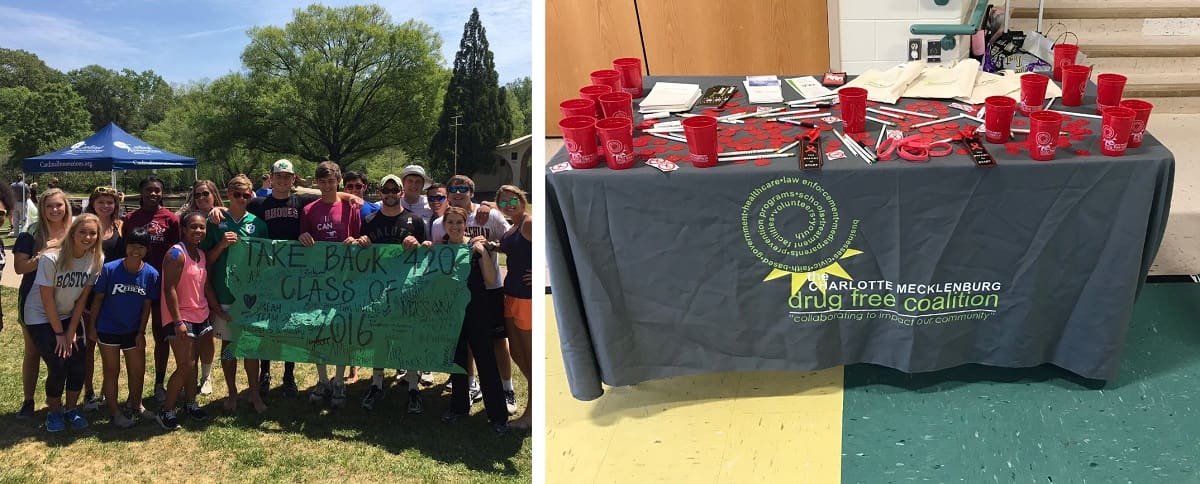
Since 2001, Charlotte Mecklenburg Drug Free Coalition (CMDFC) has served as a community coalition to reduce substance use, particularly among youth throughout Mecklenburg County. Initially, a small group of concerned citizens gathered to discuss the emerging alcohol and drug use concerns they were seeing in the county. After comparing youth reported substance use statistics obtained via the biannual Youth Drug Survey (YDS), community members were startled to realize that the community was reporting substance use patterns well above state and national averages.
“Realizing that a unified, strategic, and community-driven organization was the only way to ensure a sustainable and long-lasting impact in solving the growing substance abuse problem in Mecklenburg, the group joined forces with the Charlotte Mecklenburg Police Vice and Narcotics Division and transitioned from the MCHCSA Task Force into the Charlotte Mecklenburg Drug Free Coalition (CMDFC),” said Melanie Wilkinson, Executive Director.
North Carolina is the ninth largest U.S. state/territory by population: 10,273,419 people. A large banking hub, and a community that loves and supports sports, Charlotte also has a high poverty rate. “Although we are finding that most opioid use in our area are white males between the ages of 25 to 60 in the middle class sector, we work in 25 different zip codes here so our coalition works with all economical levels,” said Wilkinson.
CMDFC adopted a mission of “collaboratively promoting data-driven awareness, knowledge-based action and purposeful advocacy to reduce the harmful impact of alcohol and other drug abuse and addiction on youth, families and the community.” The coalition began implementing strategies to raise awareness of youth substance abuse and established the coalition as a known community clearinghouse of resources for our parents, youth, schools and community partners.
By 2008, the coalition was making significant advances in Mecklenburg County and being recognized nationally for our efforts. “We began assisting with the administration of Center for Prevention Services’ Youth Drug Survey (YDS) across the county, ensuring that we could collect regular and trustworthy data for driving decision-making every other year. We began implementing the Alcohol Purchase Survey (a retailer compliance strategy) in 2008 in collaboration with law enforcement, and by 2010 saw a 50 percent reduction in non-compliance.”
In the last year, the coalition was asked to be a part of North Carolina Lock Up Your Meds Campaign. This campaign focuses on the opioid crisis. The coalition was given over 100 lock boxes, which we have distributed to area schools, and led to policy changes on how medications are distributed to students.
When asked what advice they would give to fellow coalitions, Wilkinson replied: “Research your communities and figure out what problems you have in your area. Once you know what your problems are, reach out to area business, churches, law enforcement, schools, homeless shelters, rehab facilities and public officials. Make them a part of your coalition. With their help, set up townhall meetings and bring them in to help educate the public about drug and alcohol abuse in your areas. And never give up; people will come and go within your coalition due to job changes or lack of interest. Remember there are others that would like to be a part of your movement. And finally, use social media! Facebook, Twitter and LinkedIn are all great for advertisement and getting your word out.”


